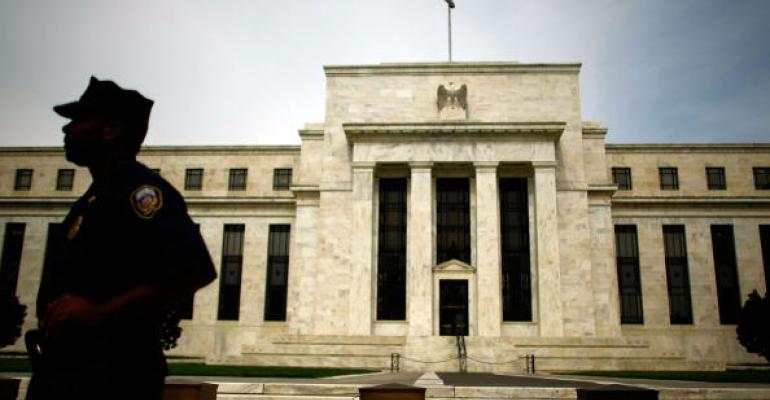(Bloomberg Opinion)—Lost in the debate about whether the Federal Reserve will lower interest rates by a quarter or a half percentage point next week is whether a reduction would even matter. After all, borrowing costs for the government, companies and consumers have been tumbling all year. At around 2%, even the yield on the benchmark 10-year Treasury note is below the target federal funds rate of 2.25% to 2.5%. Even so, market participants should be cautious accepting the hypothesis that a rate cut will have little impact on economic activity.
The Fed’s dovish pivot since December has already had a positive economic impact. Mortgage rates have followed Treasury yields lower, helping to support a housing market that looked shaky at the end of 2018. Similarly, equity prices have rebounded strongly from the pre-Christmas carnage to record highs even though earnings growth has stagnated. The riskiest companies are back to being able to raise debt financing at some of the lowest rates on record, according to the Bloomberg Barclays U.S. Corporate High Yield Bond Index.
By supporting asset prices through their dovish tilt, the Fed has bolstered the balance sheets of household and firms. Lenders will see those improved balance sheets and be more willing to extend credit. In other words, higher asset prices should lead to looser lending conditions than would otherwise be the case. Lower interest rates also improve cash flows for firms via the falling cost of short-term credit. This also increases the willingness of banks to lend.
Lower rates will also support the economy as market participants and lenders turn their attention toward riskier investment strategies and lending. While the risk-taking channel is often viewed with suspicion as it can lead to excesses in the financial system, in the current situation the Fed is attempting to counter the negative impact on risk-taking stemming from the slower global growth and persistent trade tensions. By providing a more accommodative financial environment, the Fed can help reverse some of this pessimism that might build up among business leaders and prevent a steep drop in investment spending.
The Fed’s Survey of Loan Officers reported a tightening in lending condition in the first half of 2019. Also, demand for such loans has been weaker since the Fed began raising rates. And it’s not just firms that are impacted. The net percentage of banks with increased willingness to make consumer loans fell from 14% to 4.9% over that same period. An easier monetary policy should help change the tide in these numbers or at least minimize further declines.
Turning Lower
The dollar should also be weaker relative to where it would be otherwise. In a low interest rate world, the Fed can’t deviate too far from the monetary policies of the U.S.’s major trading partners such as Europe and Japan. Higher relative rates in the U.S. puts upward pressure on the dollar, which is already at multiyear highs based on various measures. Easier monetary policy in the U.S. helps stem the dollar’s appreciation and supports international trade and the dollar earnings of U.S. multinational firms.
Another criticism of the Fed’s upcoming rate cuts is that they are unnecessary because financial conditions are already loose. But the reason financial conditions are loose is because the Fed is expected to ease. Again, recall the tightening of financial conditions after the Fed’s hawkish December meeting. The Fed has reversed this tightening through their dovish shift and now needs to ratify the shift with lower rates. If they don’t cut rates, financial conditions will again tighten and reverse the positive impacts seen this year.
The upshot is that market participants shouldn’t look at this upcoming rate cut as “just 25 basis points” and thus irrelevant to the economy. They should look at it as part of an overall dovish shift by the Fed that has already loosened financial conditions. That loosening is working its way through the economy through many different channels, some of which are already visible.
Will it be enough to prevent a recession? That still remains to be see, but I am hopeful that the Fed’s early action will prove key to maintaining this expansion. At a minimum, though, the upcoming rate cut should boost the economic outlook relative to a world in which the Fed had stubbornly maintained a tightening bias.
To contact the author of this story: Tim Duy at [email protected].
To contact the editor responsible for this story: Robert Burgess at [email protected].
© 2019 Bloomberg L.P.





